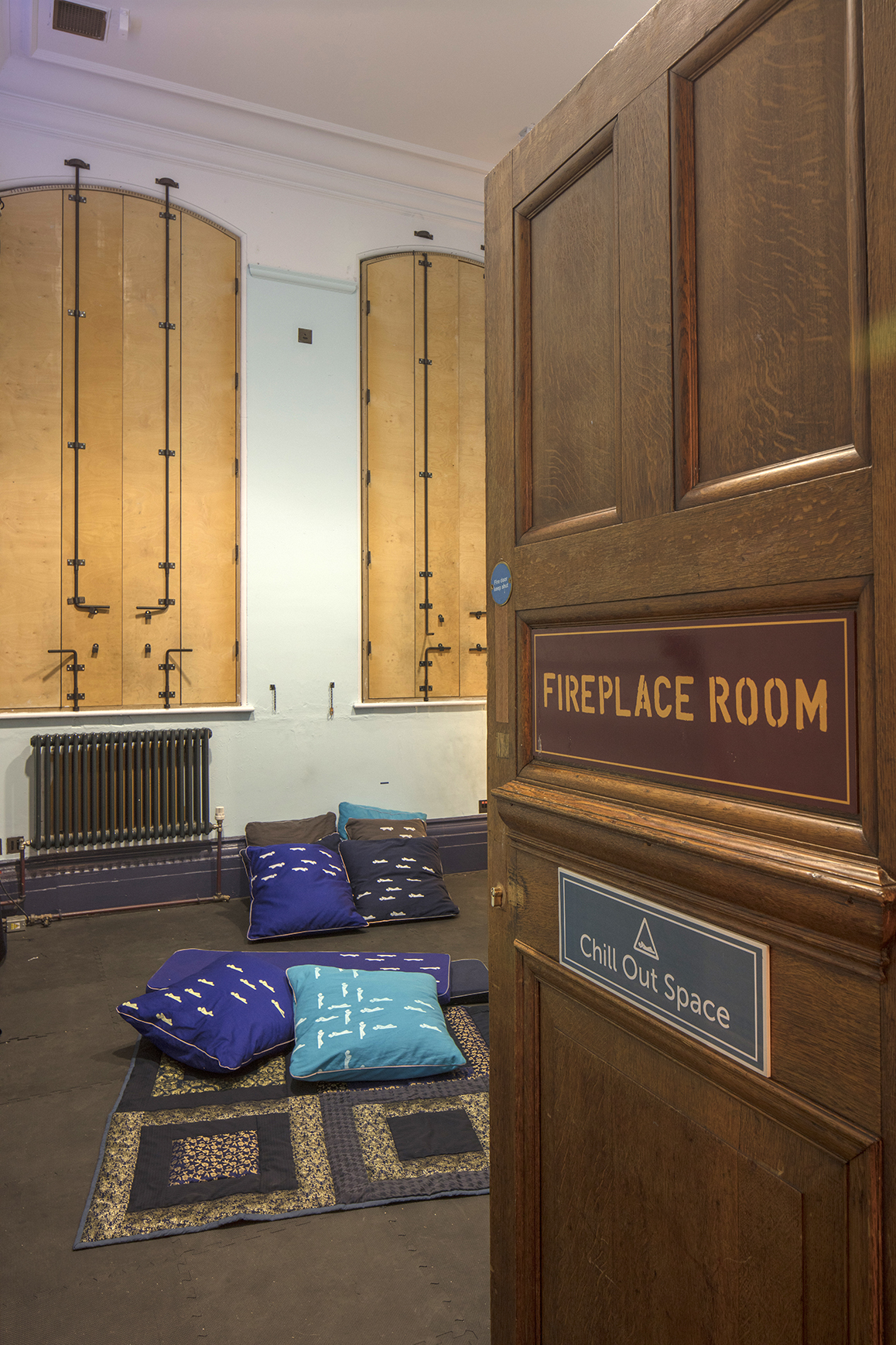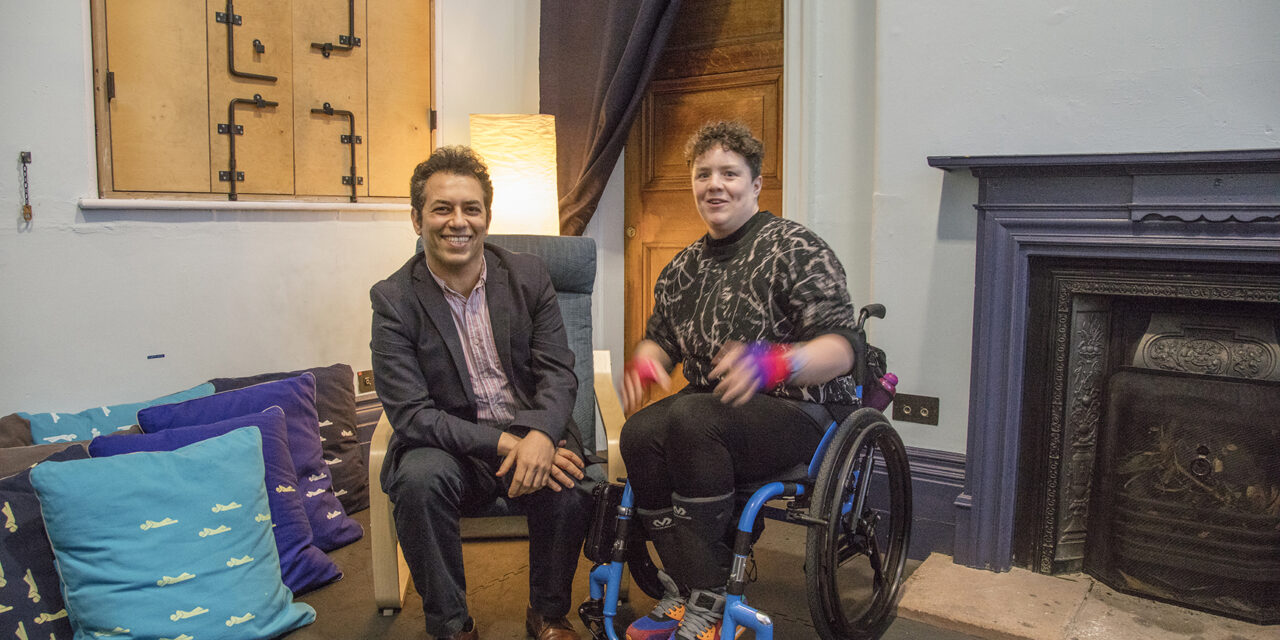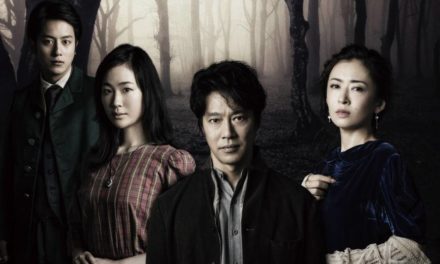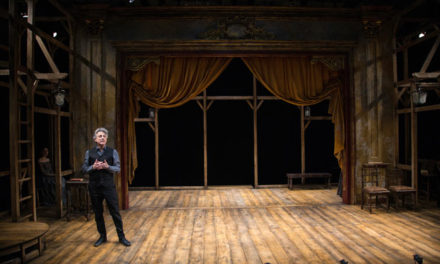Touretteshero teams up with Battersea Arts Centre to make South London’s premier theatre space the world’s first Relaxed Venue.
Jess Thom is known on stage and tv for her alter-ego and project Touretteshero – aimed at increasing awareness of the neurological condition Tourette’s Syndrome. The Touretteshero production, Backstage in Biscuit Land won a Total Theatre Award for Best Emerging Company for its 2014 debut in Edinburgh before touring the UK, North America, and Australia. Their production of Beckett’s Not I has received outstanding reviews since Thom’s first performance as Mouth in 2017, having recently toured to New York in January 2020.
Colin Hambrook: On the tenth anniversary of Touretteshero, Battersea Arts Centre recently launched as a Relaxed Venue, opening itself up to attract new performers, new audiences and potentially challenge the way that theatre is received. BAC has radically embedded access and inclusivity across all of its activities. Can you tell us about the process Touretteshero has been through working with the theatre, to make these changes?
Jess Thom: We started at the beginning of 2017, so it’s been a long process, partly because of challenges with the physical infrastructure in the building. When the lift was playing up we paused the project to make sure it was functioning reliably in order to be able to continue. We were able to have open honest conversations with BAC from the start, but there is no best time to begin, which I think often puts venues off the idea of thinking about what it means to be a Relaxed Venue. It is about not compromising on the process, so not covering up for essential, basic equality access stuff that needs to be sorted, making sure that we had the right environment to be able to do it. By coming on this journey, Battersea Arts Centre are sending a bold and exciting message to their staff, artists and audiences that they understand, welcome and celebrate disability arts and culture in all of its many forms.
BAC were 100% on board in terms of their enthusiasm and the commitment of their team has been incredible. To make the change towards becoming a Relaxed Venue is about challenging existing systems, structures and the distribution of power. That’s particularly tricky when that relates to your direct lived experience. For example, if another artist doesn’t want to engage with relaxed performance, then that can be quite difficult for me, personally, because it’s like you’re saying you don’t want me as part of your audience or you’re saying that I can only be part of your audience if I put elements of my body, identity, wellbeing on the line.
Our aim at BAC is to have a building and a space that is flexible enough, responsive enough, open enough to work for a diversity of bodies and minds. That is an ongoing process that aims to take labor away from disabled people, or people who have access requirements. At Touretteshero we often talk about the idea of access without judgment, so rather than assuming the particular types of access provision are for particular people, it’s providing as much information and resource as possible, in a multi-sensory, multi-faceted way without prescribing who will utilize them. It’s about creating circumstances where people have more control and ability to make things work for them, allowing as many people as possible to benefit.

BAC Relaxed Venue. Chill out space. Photo Morley Von Sternberg.
So often access is seen simply as the domain of what happens front of house, but it’s way more nuanced and complex than simply saying BAC has made all their performances relaxed. It’s about challenging the producing, creating and leadership processes. At its heart, a relaxed venue flips the assumption about whether or not disabled people should be in those spaces – as audience, as artists, and as staff.
CH: I understand your priority for making sure that disability arts and culture is visible in spaces like BAC, giving disabled artists equal opportunities to make and see work. Can you talk about what feedback you’ve had to date; of where relaxed performance has brought added vibrancy to BAC’s theatre spaces?
JT: We’ve received a real breadth of different user’s feedback on their experience of the space and one of the things that has surprised me is that by loosening the rules around who is allowed to make noise in the theatre, it has a knock-on benefit for how anyone can be in that space – not just a few disabled people who may be in the audience.
There was a beautiful piece in Exeunt Magazine by the journalist Maddie Costa, who talked about bringing her 10-year-old son to a show at BAC, and being able to feel his body relax the moment that the announcement about it being a relaxed performance was made. She described her son feeling like his fidgety body was fine and knowing that if he needed something, or didn’t understand something and needed to explain, that he could whisper to her. It’s about giving everyone that freedom to be themselves exactly as they are. Within that idea lies the freedom to take creative risks with a core part of who you are. Often in cultural spaces, lots of us are prevented from taking creative risks to different extents, because we have to focus on the practical requirements of our bodies. If you can follow the conventions of a theatre etiquette, then you probably follow them unquestioningly, without a thought. If you neurologically can follow the rules, then people tend to go along with that. Even if that’s not the most comfortable way for people to experience theatre. Attention and focus looks different in different types of bodies.
I was also surprised by people who run theatre venues or who see lots of theatre, who got in touch to say what a difference, either the relaxed environment had made or facilities like the chill-out space. BAC has a permanent chill-out space, designed and built by Rhiannon Armstrong. It has a soft floor, handmade mats and blankets and you can control the lights. BAC have lost a small, fairly ineffective meeting room and have gained a flexible space that acknowledges the diversity of our bodies. It is being utilized by lots of different people, primarily to rest or to manage sensory overload.
Fundamentally, it’s about changing the messages cultural environments tell us about who is valued and who is welcome. So often as a disabled person the messages my environment sends me are that you haven’t been thought about, you’re not valued and that you’re a fire risk. I hope the work that we’ve been doing at BAC will start to send a different set of messages to disabled and non-disabled people. Fundamentally, when we talk about what a relaxed venue means, Touretteshero describes seven elements of a relaxed performance, all of which need to be present for every performance. There are also three commitments that we ask relaxed venues to make as they undertake that process: a commitment to ‘no new barriers’, to ‘equality of experience’ and to ‘reducing fuss’ – challenging the cumulative impact of constantly generating a lot of fuss around your access requirements, and the messages that send you.
Those commitments guide and inform everything that a relaxed venue does. It’s way more than just offering more relaxed performances. It’s about considering a diversity of body and mind at every part of the process, for every project. It’s about acknowledging that it’s a work in progress and that it is always going to be a learning process. Venues need to understand that becoming accessible is the process of constantly identifying and removing disabling barriers. Otherwise, as soon as you stop looking for barriers and stop doing active work to dismantle them, then they will re-establish themselves. The exclusion of disabled people is so often presented as the natural order, and it’s not. It’s a choice that’s being actively made through the systems we have become used to, that exclude people.
CH: This move with BAC has the potential to challenge the theatre sector as a whole. It has the potential to change the way that theatre is received across the performing arts. When I spoke to Tarek Iskander, BAC’s Artistic Director and CEO he said that “Relaxed performances bring something of the spirit and vibrancy of the Globe’s Pit to our spaces and can lead to wonderful creative choices.” What signs for change have you perceived and what does it mean to you as a disabled person to have done this piece of work?
JT: Tarek says that when he goes to see theatre now that’s not relaxed, he really notices it and he finds it challenging. In a piece in Stagedoor, Lynn Gardner talked about theatre conventions as barnacles that build up over time, customs that we have accepted as the ‘norm’ calcifying theatre-making. This process with BAC has given us the opportunity to interrogate those customs. We’ve looked at what conventions are really necessary, and which of those have just accumulated and are keeping people out. It matters to me because connecting with art and culture rescued me from my own perceptions of my body and my expectations of the world around me.
Art has given me a set of tools to be able to manage in an often hostile world. I have loads of privilege within that, because I have the right support, because I’m able to articulate my ideas in particular ways, but still the Arts can be a really challenging environment to be in; it’s the relentlessness of having to always either justify your position or advocate for your requirements. We can create some spaces where that stress is lessened, and where people are ready to be accepted and understood exactly as they are. Where people are confident having those conversations; that feel essential to me because connecting with ideas creatively can truly transform peoples’ sense of wellbeing and their lives.
Often there’s an assumption that disabled people know what their access requirements are. Actually, really you only know what your access requirements are by having them well met. Access without judgment is about practical tools for supporting access; for example, making visual stories available for every show and sending those out to everyone who books. It’s about having the chill-out space available for anyone. Providing stuff, but without saying this is for a particular group of people; the understanding that once you make those resources available people might utilize them in different ways.
We are living in strange and precarious times. In some ways, disabled people sadly are used to feeling precarious. I think it’s vital that disability culture and the voices and perspective and strength and humor of disabled people is visible because it will help us and it will help society. As a community of people with lived experience of barriers, we have much to offer in this time of instability.
CH: I agree. The hardest thing for disability communities is finding spaces where you can come together. That sense of being isolated and living precariously can be very overwhelming.
JT: As someone who’s worked for a long period of time with disabled children and young people in London, I’m aware of how different support looks now for disabled children than it did 10 years ago. How are we going to have the next generation of disabled artists if young people don’t have the means to leave their homes? I don’t think that arts and cultural spaces have a remit to replace or replicate those services, but I think they have a duty to acknowledge the hostile environment that many disabled people are living within and work to create a safe haven that is less hostile. That’s about managing different access requirements and understanding how they can impact on each other. It’s about negotiating and sharing space and learning from each other in the broadest possible way. Ultimately that’s why I’m drawn to theatre and performance because it’s about connecting people together. The audience, artists and staff teams making that happen are all an equally important part of that process and all share the responsibility when it comes to being a relaxed venue.
To read more about Battersea Arts Centre’s commitment to being a relaxed venue go to the Relaxed Venue page on their website.
This post was written by the author in their personal capacity.The opinions expressed in this article are the author’s own and do not reflect the view of The Theatre Times, their staff or collaborators.
This post was written by Colin Hambrook.
The views expressed here belong to the author and do not necessarily reflect our views and opinions.


















